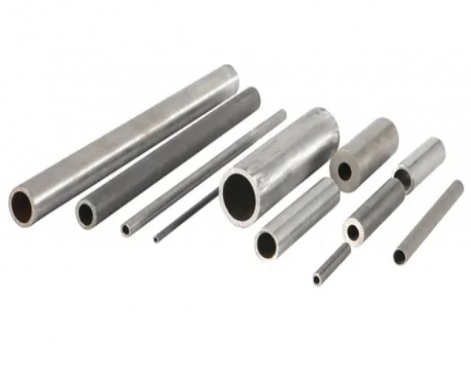There are two major categories of factors affecting the quality of seamless steel tubes: steel quality and rolling process factors.
The factors of the rolling process are discussed here. The main influencing factors are: temperature, process adjustment, tool quality, process cooling and lubrication, removal and control of debris on the surface of rolled parts, etc.
1. Temperature
Temperature is the most important factor affecting the quality of seamless steel pipes. First of all, the uniformity of the heating temperature of the tube blank directly affects the uniformity of the wall thickness and the quality of the inner surface of the perforated capillary tube, which in turn affects the quality of the wall thickness of the product. Secondly, the temperature and uniformity of the steel pipe during rolling (especially the final rolling temperature) are related to the mechanical properties, outer diameter and other dimensional accuracy and surface quality of the products delivered in the hot rolled state, especially when the billet or tube is overheated or even When overburned, it will cause waste. Therefore, in the production process of hot-rolled seamless pipes, heating and controlling the deformation temperature in strict accordance with the process requirements are the first work that must be done.
2. Process adjustment
Process adjustment and work quality mainly affect the geometry and appearance quality of steel pipes.
For example, the adjustment of the piercing machine and the pipe rolling mill affects the accuracy of the wall thickness of the product, and the adjustment of the sizing machine is related to the accuracy and straightness of the product's outer diameter. Moreover, the process adjustment also affects whether the rolling process can be carried out normally.
3. Tool quality
The quality of the tool is good or bad, and whether it is stable or not is directly related to whether the product's dimensional accuracy, surface quality and tool consumption can be effectively controlled; the quality of the mandrel surface treatment (chrome plating), firstly affects the interior of the seamless steel pipe On the surface, the second is to affect the mandrel consumption and production cost.
4. Process cooling and lubrication
The cooling quality of the piercing plug and the roll not only affects their life, but also affects the quality control of the inner and outer surfaces of the finished product. The cooling and lubrication quality of the mandrel firstly affects the inner surface quality, wall thickness accuracy and mandrel consumption of the seamless steel pipe; it will also affect the load during rolling.
5. Removal and control of sundries on the surface of rolled parts This refers to the timely and effective removal of iron scale on the inner and outer surfaces of capillaries and waste pipes and the control of re-oxidation before rolling deformation. Nitrogen blowing and borax blasting for the inner hole of the capillary tube, high-pressure water descaling at the tube rolling and fixed (reduced) diameter entrance can effectively improve and enhance the internal and external surface quality.
The factors of the rolling process are discussed here. The main influencing factors are: temperature, process adjustment, tool quality, process cooling and lubrication, removal and control of debris on the surface of rolled parts, etc.
1. Temperature
Temperature is the most important factor affecting the quality of seamless steel pipes. First of all, the uniformity of the heating temperature of the tube blank directly affects the uniformity of the wall thickness and the quality of the inner surface of the perforated capillary tube, which in turn affects the quality of the wall thickness of the product. Secondly, the temperature and uniformity of the steel pipe during rolling (especially the final rolling temperature) are related to the mechanical properties, outer diameter and other dimensional accuracy and surface quality of the products delivered in the hot rolled state, especially when the billet or tube is overheated or even When overburned, it will cause waste. Therefore, in the production process of hot-rolled seamless pipes, heating and controlling the deformation temperature in strict accordance with the process requirements are the first work that must be done.
2. Process adjustment
Process adjustment and work quality mainly affect the geometry and appearance quality of steel pipes.
For example, the adjustment of the piercing machine and the pipe rolling mill affects the accuracy of the wall thickness of the product, and the adjustment of the sizing machine is related to the accuracy and straightness of the product's outer diameter. Moreover, the process adjustment also affects whether the rolling process can be carried out normally.
3. Tool quality
The quality of the tool is good or bad, and whether it is stable or not is directly related to whether the product's dimensional accuracy, surface quality and tool consumption can be effectively controlled; the quality of the mandrel surface treatment (chrome plating), firstly affects the interior of the seamless steel pipe On the surface, the second is to affect the mandrel consumption and production cost.
4. Process cooling and lubrication
The cooling quality of the piercing plug and the roll not only affects their life, but also affects the quality control of the inner and outer surfaces of the finished product. The cooling and lubrication quality of the mandrel firstly affects the inner surface quality, wall thickness accuracy and mandrel consumption of the seamless steel pipe; it will also affect the load during rolling.
5. Removal and control of sundries on the surface of rolled parts This refers to the timely and effective removal of iron scale on the inner and outer surfaces of capillaries and waste pipes and the control of re-oxidation before rolling deformation. Nitrogen blowing and borax blasting for the inner hole of the capillary tube, high-pressure water descaling at the tube rolling and fixed (reduced) diameter entrance can effectively improve and enhance the internal and external surface quality.









